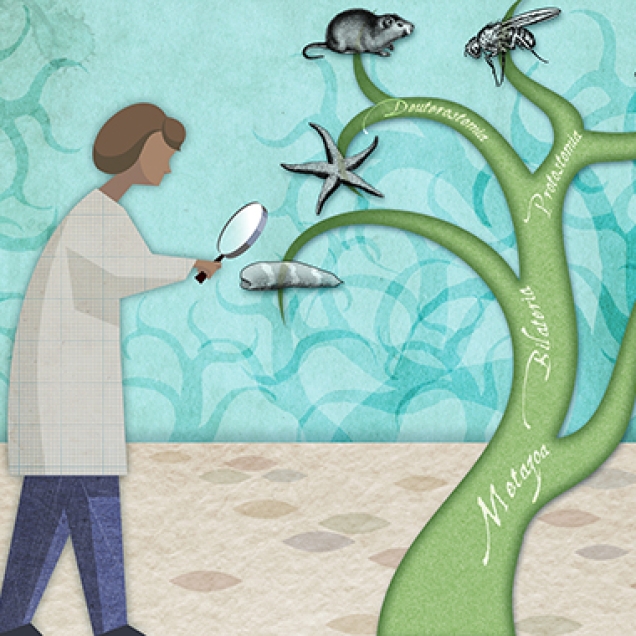Evolution in action
Researchers at Whitehead Institute are zooming in on the molecules of life — DNA, RNA, and proteins — to understand how modifications at a molecular level have a lasting impact on the way organisms grow, develop, survive, and reproduce.

Life on Earth began some 3.8 billion years ago and has been evolving ever since. Fortunately, piecing together this evolutionary history doesn’t require time travel — researchers at Whitehead Institute are studying the life span of everything from individual cells and microorganisms to more complex species like fruit flies and plants to learn how evolution is taking place around us in real time. As American geneticist and evolutionary biologist Theodosius Dobzhansky emphasized "nothing in biology makes sense except in the light of evolution.”
In the lab of Whitehead Institute Member Jonathan Weissman and collaborators, researchers use CRISPR technology to track the lineage of individual cancer cells across generations of cell division. This approach of constructing a cell’s family tree allows them to rewind the molecular clock and study each event in a cancer’s origin story — mutation, proliferation, and metastasis — in fine-grained detail.
“Previously, the critical events that cause a tumor to become life-threatening have been opaque because they are lost in a tumor’s distant past, but this gives us a window into that history,” Weissman said. Their work could eventually refine existing cancer therapies and inform the development of new ones, particularly for rapidly spreading metastatic cancers.
Mary Gehring, Whitehead Institute Member and David Baltimore Chair, is using epigenetics — heritable information that regulates genes by turning them on and off without altering the DNA sequence — to explore how various genes affect plant growth and development, from gamete cells to seed maturation, across multiple generations. These insights are essential for engineering the next generation of crops: stress-resistant, more nutritious, and higher yielding plants.
Whitehead Fellow Lindsey Backman is also looking at evolution but in neither plants nor animals. Her work on a handful of anaerobes — microorganisms that do not need oxygen to survive or proliferate — that inhabit our skin, mouth, and gut is revealing basic principles of how pathogens outcompete beneficial bacteria in the body, promoting infections. These bacteria are living descents of primitive organisms that existed billions of years ago when Earth’s atmosphere and oceans were devoid of oxygen. Over time, they’ve managed to successfully deploy an array of strategies to thrive in an oxygen-rich world.
Explore the stories in this multimedia collection to learn about these research projects — and others — that are catching evolution in action and illuminating the past like never before.


